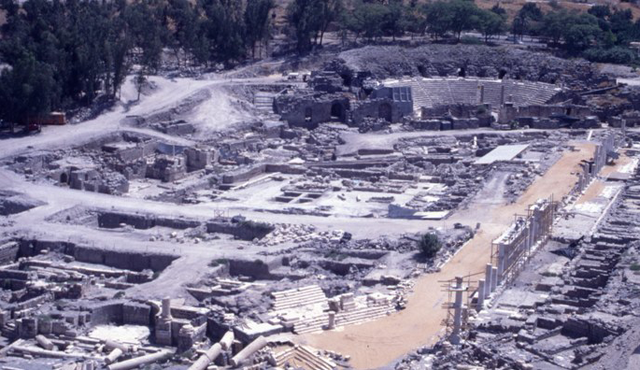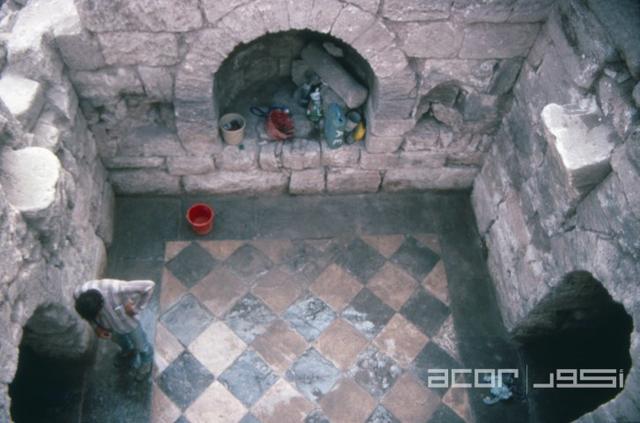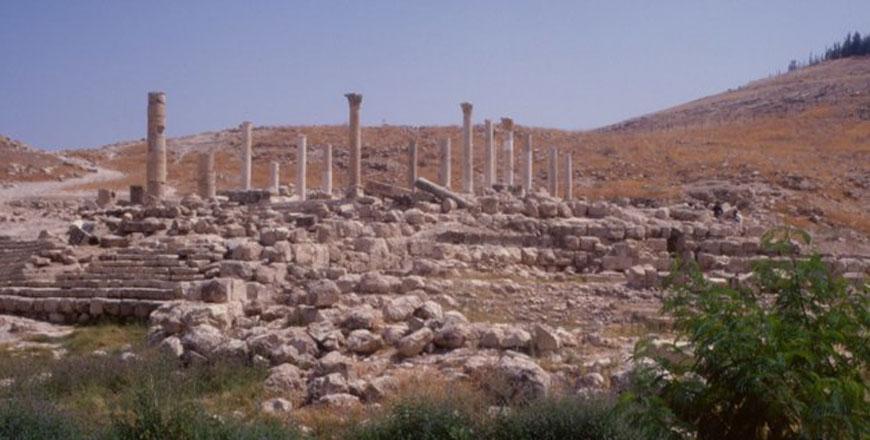You are here
Earthquakes had their impact on ancient Decapolis towns of Pella in Jordan, Scythopolis in Palestine
By Saeb Rawashdeh - Feb 24,2024 - Last updated at Feb 24,2024

A general view of Scythopolis, an urban and commercial centre built in the Hellenistic times (Photo courtesy of ACOR)
AMMAN — Earthquakes have been the most devastating events that shaped the lives of civilisations and individuals during history. Due to its position between Asian and African tectonic plates, Transjordan has been affected by many catastrophic earthquakes from antiquity until modern times.
One such earthquake occurred in 749AD, devastating Tiberias, Scythopolis (modern Baysan), Jericho and Pella (TabaqatFahel), along with other cities such as Gerasa and Ammon.
Scythopolis in Galilee and Pella are located on the same east-west line and were strategic centres with a tropical climate, copious water and extensive connections to sea and land. Both towns had experienced more than three millennia of urban history.
Founded in the Hellenistic period, Scythopolis became the capital of PalaestinaSecunda around the turn of the 5th century AD. From 1st to 3rd centuries AD, the complex of Zeus Akraios was built.
“As the primary Decapolis town, Scythopolis provisioned itself with all the civic trappings needed to create a new and impressive ‘classicising’ town core, with temples, theatres, an odeum, thermae, a nymphaeum, a basilica, a forum, piazzas and honorific monuments jammed into the space,” noted Senior Lecturer from the University of Edinburgh Louise Blanke, who studied history and classical archaeology.
Rather than a lone, long axial street as at Gerasa, four disjointed lengths of paved and colonnaded streets were laid out, creating a staggered sequence of urban vistas dominated by shops and monuments both celebratory and functional, Blanke continued, saying, “Of these, Palladius Street formed the primary avenue, axially linking the theatre with temple gateways at the foot of the tall while offering an unimpeded straight line of sight to the elevated temple of Zeus Akraios”.
From the 4th to mid-8th centuries AD, a steady sequence of repaired, replaced, repurposed and new buildings refreshed the town’s wider assemblage of civic monuments, whereas some contraction and abandonment occurred in other areas, Blanke said.
“Repairs to existing monuments, such as the nymphaeum, eastern bathhouse and a magnificent portico, predating a civic basilica were limited to necessary buildings that served social, commercial and aesthetic purposes in the distinctive urban landscape of Scythopolis,” Blanke underlined, adding that some unwanted elements were, in time, replaced with new structures that better-matched community requirements and facilitated financial gain.
In the later centuries, the Roman agora was replaced with commercial districts with workshops while monument replacement also happened in the city centre.
Furthermore, the hippodrome was converted into a theatre, while what remained of the great temple on the tall was reduced to its foundations and but probably later, a new paved road beginning at the northwest corner of the tall gave access to a walled ecclesiastical complex on the summit.
“Sometime later again, likely in the 7th century AD, the basilica was badly damaged and replaced by a circular church, into which some surviving walls of the basilica were incorporated,” Blanke said, adding that Odeon conversions happened at Pella and Gerasa.
Scythopolis and Pella developed the outskirts of the city centre building new streets and housing units.
The tremor of 659AD and the earthquake of 749AD had a devastating impact on Pella.
“Early Islamic commercial centre [khan] composed of two compounds, eight to tenth centuries courtyard house, damaged in the 659AD earthquake, central church and Odeon, East church, damaged in the 659AD tremor and perhaps destroyed by the 749AD earthquake,” Blanke noted, adding that in resilience theory terms, a pause within a socioeconomic system indicates a usually long period of “conservation” but not “decline”.
Buildings suffered from “neglect”, space was commandeered and municipal systems “disintegrated” — all compounded by natural disasters, Blanke said, adding that the 7th and 8th centuries were very challenging times, but Scythopolis and Pella managed to navigate skillfully through disasters.
Related Articles
AMMAN — Next year will mark 42 years of excavations carried out at the archaeological site of Abila, also known as Tel Abila, which belonged
AMMAN — Plagues, wars and earthquakes shaped the history of urban centres and states.
AMMAN — Pella, located in north-western Jordan, has been a site continuously occupied from the Neolithic times to more recent periods.


















